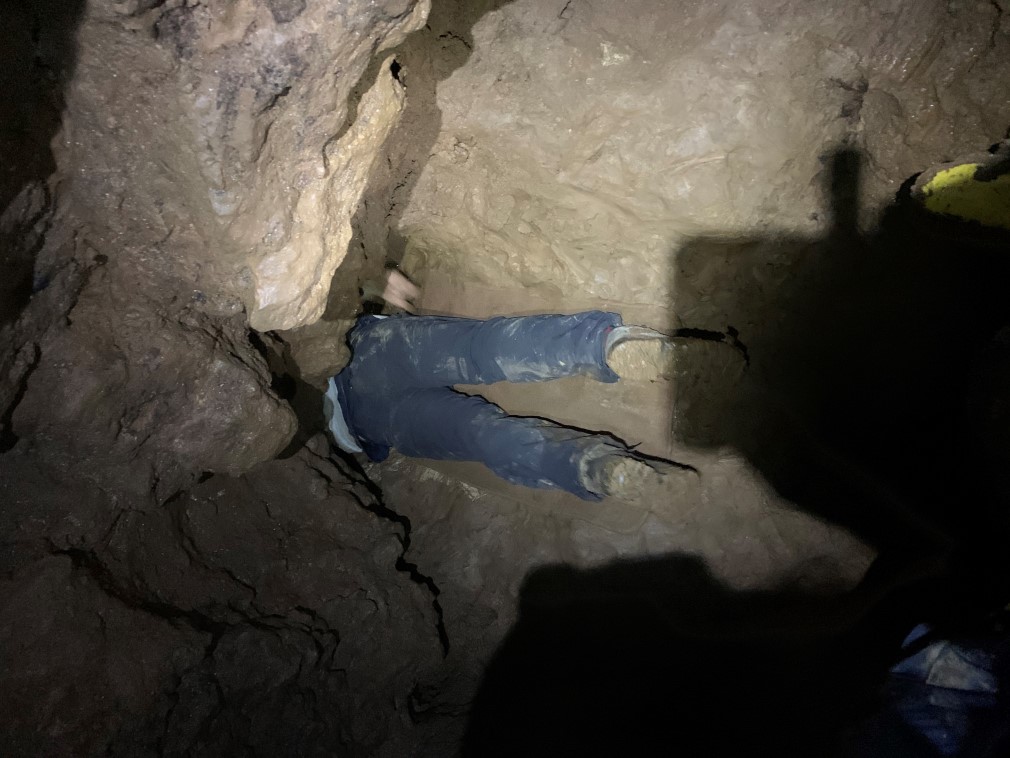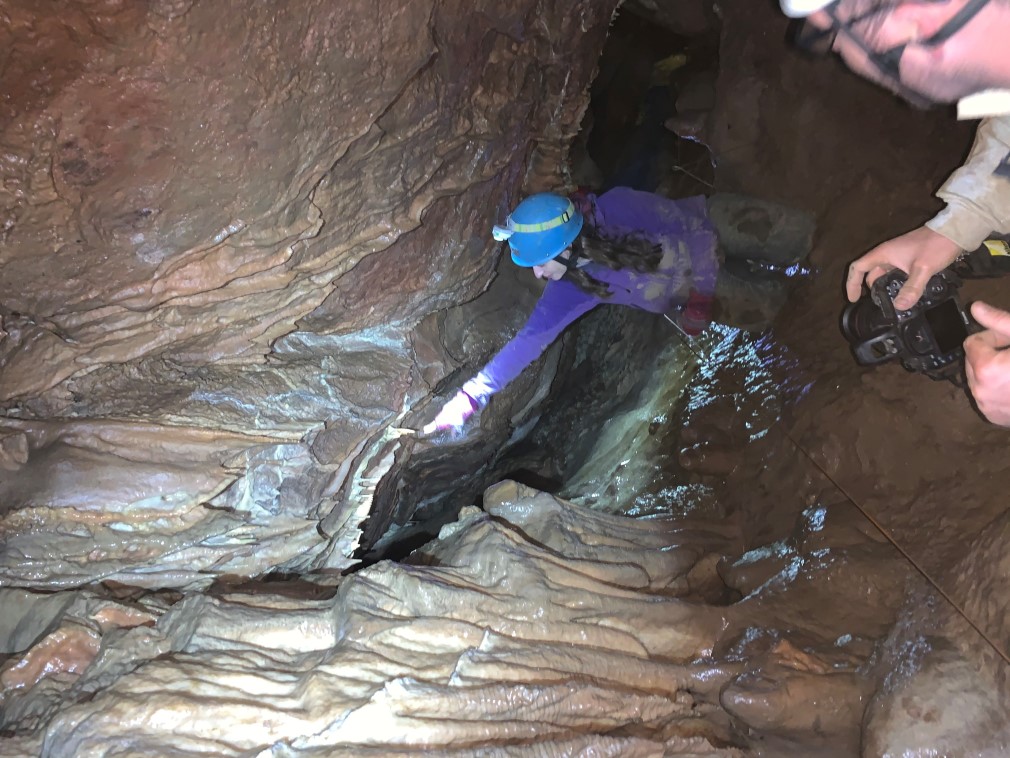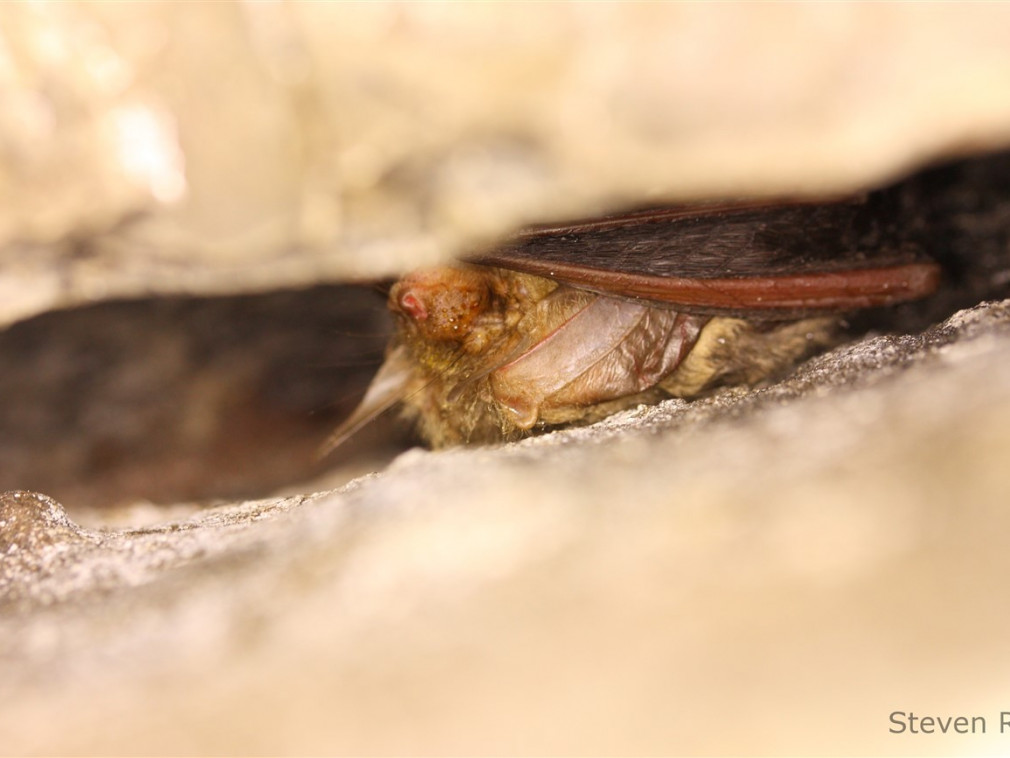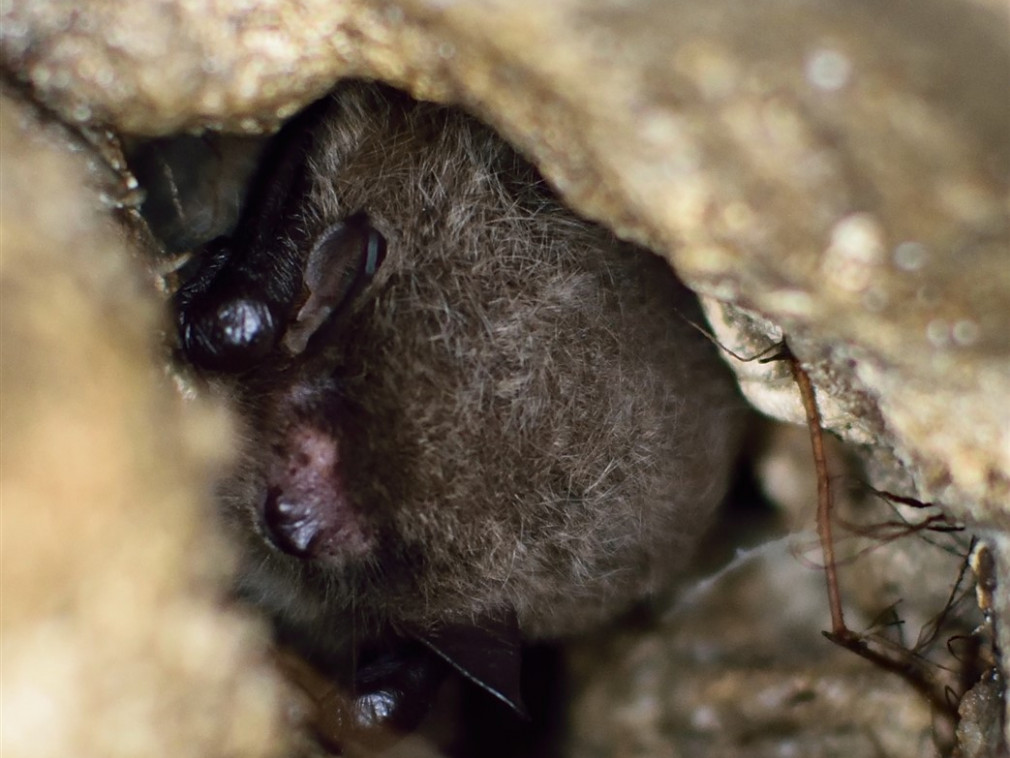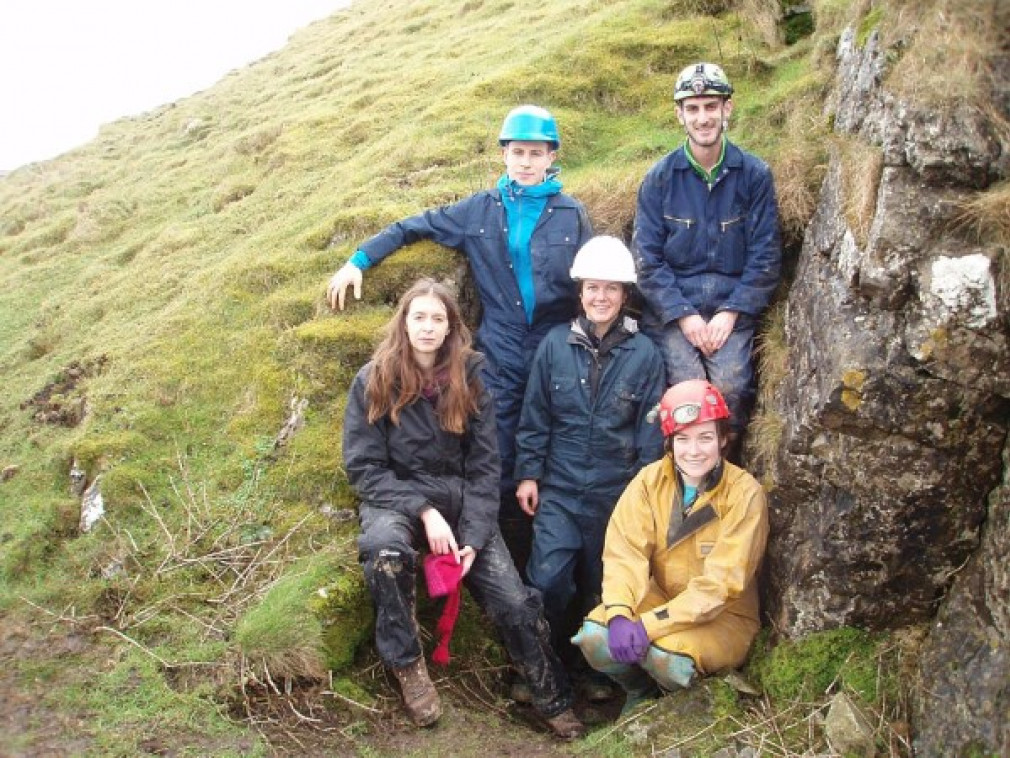In hidden corners of the Peak District are four cave sites belonging to the National Trust. Access to these is restricted by specialist cave doors fitted to protect the fragile formations and archaeological interest of the sites. Luckily they were fitted with bats in mind and bats flitter their way into these caves unhindered, to roost amongst the crevices along with cave spiders, herald and tissue moths. I first surveyed the White Peak National Trust cave sites back in 2005. Since then we’ve registered these sites with the NBMP and have given the historic data to the Bat Conservation Trust. Due to COVID-19, and in line with guidance, we avoided undertaking surveys in 2021. With updated guidance from the Bat Conservation Trust we were able to recommence surveys this year with a skeleton team employing mitigating factors such as wearing masks as well as lateral flow tests 24 hours before the day.
Even though the four sites are small, it’s a full day’s job to survey them all due to the distance between them. Meeting in the sleepy village of Ilam on brisk January mornings has become an annual tradition. Car sharing from Ilam the team drive up to Longnor to the only Derbyshire cave of the day, Fox Hole cave located on the slopes of High Wheeldon Hill. Scaling the hillside is the part of the day that lets everyone know who has neglected their exercise over the Christmas period! Excavation of the cave over multiple years has produced Mesolithic, Neolithic, Beaker, Bronze Age and Roman material, but it is the cave's Palaeolithic context that makes it of particular interest. Artefacts of flint and antler have been found in association with charcoal, denoting a hearth, and the bones of bear, horse and red deer, split and therefore indicating human activity. An initial chamber behind the first door is always cold as the air sinks down into the hole and gets trapped against the second door. We always expect to find bats here in some of the deeper roof crevices. Beyond the second door the air is still and humid and the cave travels along a narrow passageway and Daubenton’s bats are the most likely species to be found in this part of the system. Opening up to two larger chambers occasional whiskered/Brandt’s bats can be sighted and with the roof several meters high, some bats can be tricky to identify.
Back down to the cars and we drive along the lanes towards Wetton Mill, crossing over the Dove at Crowdicote puts us firmly in Staffordshire for the rest of the day. We stop off at two sites in Wetton Mill; an old shaft entrance located next to the River Manifold and one above the Manifold Cycle trail with a view of Thors Cave in the distance. Here we often spot peregrines and woodcock.
The final cave of the day is a little further along the Manifold right down by the river itself, this is a tricky site to get to with no footpath there, we have to traverse our way along the steep riverbank. By far the greatest haul of bats of the day, often approaching double figures, many bats are tucked high in the roof of the entrance chamber with further numbers through the squeeze to the back of the cave.
Steve Roe
Vice Chair
